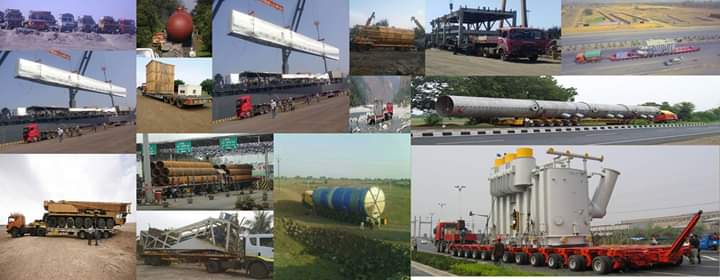Why and What is Investor ?

An investor is someone who commits their money to something with the expectation of making a profit or some other benefit. Here’s a breakdown of the why and what:
Why Become an Investor?
Grow Wealth: Investing allows your money to potentially grow at a much faster rate than a traditional savings account. This growth is due to factors like compound interest and the potential for appreciation in the value of investments.
Beat Inflation: Inflation reduces the buying power of your money over time. Investing can help your money keep pace with inflation, or even outpace it.
Meet Financial Goals: Investing is a powerful tool for achieving long-term financial goals like retirement or a child’s education.
What Does an Investor Do?
Allocates Capital: Investors commit their money (capital) to various investment vehicles. These vehicles can include stocks, bonds, real estate, or even businesses.
Seeks Return: The goal is to generate a return on investment. This return can come in a few ways:
Capital Appreciation: This refers to an increase in the value of the investment itself. For example, if you buy stock in a company and the company’s share price goes up, you’ve experienced capital appreciation.
Income Generation: Some investments, like bonds and rental properties, generate regular income payments.
It’s important to remember that investing involves risk. There’s always the possibility of losing money. Investors need to carefully consider their risk tolerance and choose investments that align with their financial goals.
Examples of Investors in Business

| FEATURE | FUTURE | COMPARISON | INVESTMENT SIZE | WHAT AND WHY IS BEST |
|---|---|---|---|---|
| Individual | Promising Idea | Smaller Amounts, Personal Connection | Small | Friends/Family, Belief in Idea |
| Angel | High Growth Potential | Mentorship, Early Stage | Small – Medium | Early Stage Startups, Guidance |
| VC | High Growth Potential | Large Sums, Equity Stake | Medium – Large | High-Growth Startups, Equity Stake |
| Bank | Established Track Record | Debt Financing | Large | Established Businesses, Loan Option |
| Institutional | Diversification | Large Pool of Money | Large | Diversification of Portfolio |
| Crowdfunding | Large Audience Reach | Many Investors | Small – Medium | Small Businesses, Online Reach |
Businesses can look to a variety of investors for funding, depending on their stage and needs. Here are some of the most common types:
Individual Investors: This can include friends, family, or even acquaintances who believe in your business idea and are willing to contribute some capital. They typically invest smaller amounts and might be motivated by personal connection alongside potential returns.
Angel Investors: These are wealthy individuals who invest in early-stage startups with high growth potential. They often provide not just money but also mentorship and guidance based on their experience.
Venture Capitalists (VCs): VC firms invest in startups with high growth potential, typically in exchange for equity (ownership stake) in the company. They tend to invest larger sums than angel investors and are more involved in the company’s strategic direction.
Banks: Banks provide business loans, which is debt financing. The business repays the loan with interest over time. This is a good option for established businesses with a strong track record.
Institutional Investors: These are large organizations that pool money from many investors, such as pension funds, mutual funds, and hedge funds. They may invest in a variety of businesses, including publicly traded companies and private equity deals.
Crowdfunding Platforms: These platforms allow businesses to raise capital from a large number of people online. This can be a good option for businesses that need to raise a smaller amount of money.
Portfolio of Worldwide Top 10 Investors

Here are two approaches to consider a portfolio of successful investors:
1. By Wealth:
This approach focuses on investors with the highest net worth, assuming their wealth reflects successful investing strategies. Here are some possible inclusions:
- Elon Musk (Tesla, SpaceX): Known for disruptive innovation and large bets in technology and space exploration.
- Warren Buffett (Berkshire Hathaway): A value investor focused on long-term holdings in established companies.
- Bernard Arnault & family (LVMH): Masterminded the growth of a luxury goods empire.
- Jeff Bezos (Amazon): Revolutionized online retail and expanded into cloud computing.
- Bill Gates (Microsoft): Built a software giant and focuses on philanthropy through the Bill & Melinda Gates Foundation.
- Steve Ballmer (Microsoft): Long-time CEO of Microsoft and investor in sports teams.
- Larry Ellison (Oracle): Built a dominant database software company and known for large yacht acquisitions.
- Charles Koch (Koch Industries): Industrial conglomerate owner with a focus on free-market principles.
- Mukesh Ambani (Reliance Industries): Leading Indian industrialist with a diversified business portfolio.
- Dieter Schwarz (Schwarz Group):** German billionaire behind the Lidl supermarket chain.
2. By Investment Style:
This approach highlights investors known for specific successful strategies:
Value Investing:
Warren Buffett (Berkshire Hathaway)
Benjamin Graham (Author of “Intelligent Investor”)
Growth Investing:
Peter Lynch (Former Manager of Fidelity Magellan Fund)
Cathie Wood (ARK Invest)
Activist Investing:
Carl Icahn (Activist investor pushing for corporate change)
Nelson Peltz (Trian Fund Management)
Quantitative Investing:
James Simons (Renaissance Technologies) – utilizes complex algorithms for investment decisions
Portfolio of top 10 Investors in India

Creating a definitive portfolio of the top 10 investors in India is challenging due to varying investment styles and disclosure regulations. However, here are some of the most well-regarded Indian investors you can research to form your own analysis:
- Rakesh Jhunjhunwala: Often referred to as the “Big Bull” of the Indian stock market, Jhunjhunwala is a value investor with a concentrated portfolio in large-cap companies.
- Radhakishan Damani: Founder of supermarket chain DMart, Damani is known for his value investing approach and focus on long-term holdings.
- Mohnish Pabrai: A value investor following the footsteps of Warren Buffett, Pabrai focuses on undervalued businesses with strong fundamentals.
- Porinju Veliyath: A popular investor known for his focus on small and mid-cap companies with high growth potential.
- Ashish Dhawan: Founder of Dhawan Value Investing, Dhawan is another value investor concentrated on beaten-down stocks with turnaround potential.
- Nemish Shah: Managing Director of ENAM Holdings, Shah is a value investor focused on long-term wealth creation.
- Vijay Kedia: Known for his multi-bagger stock picks in small and mid-cap companies, Kedia is a patient investor with a focus on quality businesses.
- Dolly Khanna: A value investor with a concentrated portfolio, Khanna is known for her long-term investment horizon and focus on quality businesses.
- Mukesh Ambani: Chairman of Reliance Industries, Ambani is not just a business magnate but also a savvy investor with a diversified portfolio across various sectors.
- Ashish Kacholia: Known for his special situations investing approach, Kacholia focuses on companies undergoing restructuring or with hidden asset value.
Remember, this list is not exhaustive, and past performance doesn’t guarantee future results. It’s crucial to do your own research before making any investment decisions based on someone else’s portfolio.
Investment in India’s Logistics Segment: A Booming Opportunity

The logistics sector in India is a massive and rapidly growing industry, presenting a lucrative opportunity for investors. Here’s a breakdown of why it’s attractive and how you can participate:
Why Invest in Indian Logistics?
High Growth: The Indian logistics market is projected to reach a staggering USD 484.43 billion by 2029, with a healthy CAGR (Compound Annual Growth Rate) of 8.8%. This growth is fueled by factors like:
Increasing e-commerce penetration
Rising GDP and consumption
Growing manufacturing sector
Government initiatives to improve infrastructure
Government Support: The Indian government is actively promoting investment in logistics through initiatives like:
Gati Shakti National Master Plan: Aims to improve infrastructure connectivity across all modes of transport.
“Infrastructure Status” for Logistics: Makes the sector eligible for easier access to credit and tax benefits.
Multiple Sub-Sectors: The logistics sector offers a diversified range of investment opportunities across warehousing, transportation, technology solutions, and more. This allows investors to choose based on their risk appetite and preferences.
How to Invest in Indian Logistics?
There are several ways to participate in the growth of India’s logistics sector:
Logistics Stocks: Invest in publicly traded companies operating in the logistics space. Research companies with strong track records, efficient operations, and expansion plans.
Logistics Mutual Funds/ETFs: These investment vehicles offer a diversified basket of logistics stocks, allowing you to spread your risk.
Private Equity/Venture Capital: Consider investing in private companies with high growth potential in specific logistics segments like cold chain or last-mile delivery.
Real Estate Investment Trusts (REITs): Invest in REITs focused on logistics infrastructure like warehouses and distribution centers. This can provide rental income and potential capital appreciation.
Important Considerations:
Market Volatility: The Indian stock market can be volatile. Carefully research individual companies before investing.
Regulatory Environment: Stay updated on any changes in government regulations that might impact the logistics sector.
Long-Term Perspective: The logistics sector offers promising long-term growth, but short-term fluctuations are possible.
Overall, the Indian logistics sector presents an attractive investment opportunity for both domestic and international investors. By understanding the growth drivers, government support, and various investment options, you can make informed decisions to capitalize on this dynamic market.
Big Logistics Companies in India and Their Funding

| Company | Sector Focus | Funding | Source |
|---|---|---|---|
| Blue Dart Express | Express Delivery, International Freight | (Private Equity ownership) | |
| Delhivery | E-commerce Logistics, Warehousing | Over $2.5 Billion | SoftBank Vision Fund, Tiger Global, Nexus Venture Partners |
| Ecom Express Private Limited | E-commerce Delivery | Over $700 Million | Warburg Pincus, Sequoia Capital, Everstone Capital |
| Mahindra Logistics | Supply Chain Management, Last-Mile Delivery | (Part of Mahindra Group) | |
| Allcargo Logistics | Multimodal Transport, Container Freight Stations | Over $300 Million | Warburg Pincus, IFC, The Abraaj Group |
| TCI Express | Express Distribution, Contract Logistics | (Listed company, limited funding data available) | |
| Gati | Express Delivery, Supply Chain Solutions | Over $150 Million | |
| Safexpress | Express Delivery, Surface Transport | (Part of Blue Dart) | |
| DP World | Container Terminal Operations, Logistics Parks | (Focus on International Operations) |
Famous Logistics Investors in India

| Investor | Investment Style | Recent Logistics Investments | Website |
|---|---|---|---|
| Warburg Pincus | Private Equity | Ecom Express, Delhivery, Allcargo Logistics | https://warburgpincus.com/ |
| SoftBank Vision Fund | Venture Capital | Delhivery | https://visionfund.com/ |
| Tiger Global | Venture Capital | Delhivery | https://www.tigerglobal.com/ |
| Nexus Venture Partners | Venture Capital | Delhivery | https://nexusvp.com/ |
| Sequoia Capital | Venture Capital | Ecom Express | https://www.sequoiacap.com/ |
| Everstone Capital | Private Equity | Ecom Express | https://everstonecapital.com/ |
| IFC (International Finance Corporation) | Private Equity | Allcargo Logistics | https://www.ifc.org/en/home |
Problems in Logistics Sector
The Indian logistics sector is booming, but it’s not without its challenges. Here’s a breakdown of some of the key problems that persist:
Infrastructure Bottlenecks:
Inadequate Transportation Network: India faces a shortage of good quality roads, railways, and waterways. This leads to congestion, delays, and increased transportation costs.
Limited Warehousing Capacity: The availability of modern warehousing facilities, especially in tier-II and tier-III cities, is insufficient to meet the growing demand for storage space.
Operational Inefficiencies:
Fragmented Market: The Indian logistics sector is highly fragmented, with a multitude of small and unorganized players. This makes it difficult to achieve economies of scale and standardization.
Skill Gap: There’s a shortage of skilled professionals in logistics management, including warehouse personnel, truck drivers, and supply chain specialists.
Regulatory Hurdles:
Complex Tax Structure: Multiple taxes levied across various states create a complex and time-consuming compliance burden for logistics companies.
Lengthy Permitting Procedures: Obtaining clearances and permits for operating warehouses and transportation fleets can be a slow and bureaucratic process.
Other Issues:
High Logistics Costs: Due to the factors mentioned above, logistics costs in India remain high compared to developed economies, impacting business competitiveness.
Technological Lag: While some companies are embracing technology, many lack the resources to invest in modern logistics management systems and automation solutions.
These problems act as roadblocks to further growth and efficiency in the Indian logistics sector. However, the government and private players are taking steps to address them:
Government Initiatives: The government’s focus on infrastructure development projects like Bharatmala (national highways) and Sagarmala (port development) aims to improve connectivity.
Skill Development Programs: Initiatives to train logistics professionals are being implemented to bridge the skill gap.
GST Implementation: The Goods and Services Tax (GST) aims to simplify the tax structure and streamline logistics operations across states.
Overall, while challenges remain, the Indian logistics sector is on a growth trajectory. By addressing these issues through infrastructure development, improved regulations, and technological advancements, India can unlock the sector’s full potential and become a global logistics hub.
Conclusion of Logistics Business and Investors in India
The Indian logistics business and investor landscape presents a compelling picture of opportunity and challenge. Here’s a recap of the key points:
Opportunities:
Rapid Growth: The logistics sector is experiencing significant growth driven by e-commerce, rising GDP, and government initiatives. This translates to a lucrative market for businesses and investors.
Diverse Investment Options: Investors have a wide range of choices across sub-sectors like express delivery, warehousing, and logistics real estate, allowing for strategic investment decisions.
Focus on Innovation: There’s a growing demand for technology-driven solutions to optimize logistics operations and cater to the evolving needs of the market.
Challenges:
Infrastructure Bottlenecks: Inadequate transportation networks and limited warehousing capacity create inefficiencies and increase costs.
Operational Issues: Fragmentation in the market and a skill gap in logistics management hinder smooth operations.
Regulatory Hurdles: Complex tax structures and lengthy permitting processes pose challenges for businesses.
Looking Ahead:
Increased Competition: As the market matures, competition for both investors and businesses is likely to intensify.
Focus on Sustainability: Investors and businesses that prioritize environmentally friendly practices will gain a competitive edge.
Technological Advancements: Embracing automation, data analytics, and other technological solutions will be crucial for future success.
Conclusion:
The Indian logistics sector is poised for continued growth, offering exciting prospects for businesses and investors who can navigate the challenges and capitalize on the opportunities. With a focus on infrastructure development, improved regulations, and technological advancements, India has the potential to become a major player in the global logistics landscape.
